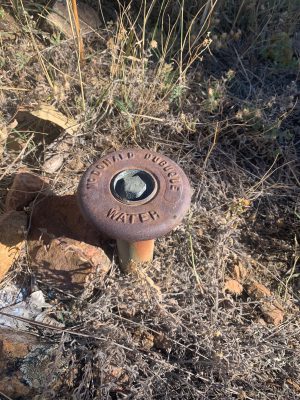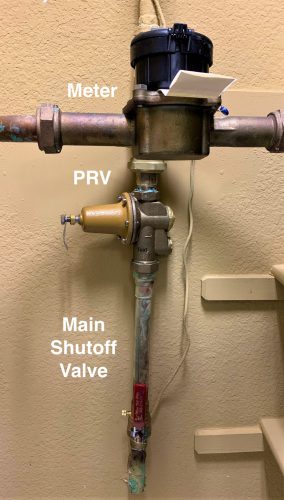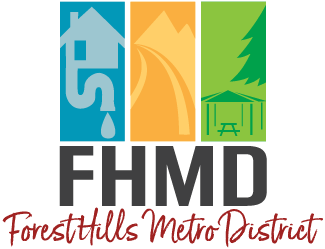
Water System
The District pumps approximately 10 million gallons of water each year from 10 wells that are up to 1000 feet deep. Water is distributed through 5 miles of pipes to homes while controlling pressures over widely varying elevations. Water is treated with chlorine then stored in a large tank to assure several days usage. Direct Discharge, our operator, conducts water quality tests monthly and more comprehensive tests annually according to Colorado State regulations. Each year, homeowners are sent a Consumer Confidence Report detailing the results of the testing.
Water Conservation
The District manages its own water and sewer system and although we supply millions of gallons of water a year from aquifers, water is scarce in our state. We have a legal responsibility to carefully manage our State’s water resources. One way is to encourage responsible use with progressive water rates. In addition, we can limit outside irrigation during the warm months to only certain days of the week. It is the homeowner’s responsibility to assure their plumbing system is properly maintained to prevent leaks and landscaping is designed and maintained to keep irrigation to a minimum. We also provide cellular based water meters which allow immediate feedback to homeowners in the event of leaks or unexpectedly high use.
How to Detect a Leak
If you suspect excess water use is due to a continuous leak, attach a pressure gauge to a hose bib. Close your main shutoff valve and all faucets, then open the hose bib valve. The pressure should remain constant. Due to the incompressible nature of water and your homes piping, even small leaks should be reflected in a continually dropping water pressure. The District recommends homeowners shut off their main valve, if possible, when they are away from home for extended periods.
It is worth noting that, for example, an undetected leaking toilet valve can result in over 50,000 gallons of wasted water before a homeowner is made aware by receiving a water bill of over $2,000. These surprise bills can be prevented by using the Waterscope App or website.
Waterscope App and Website
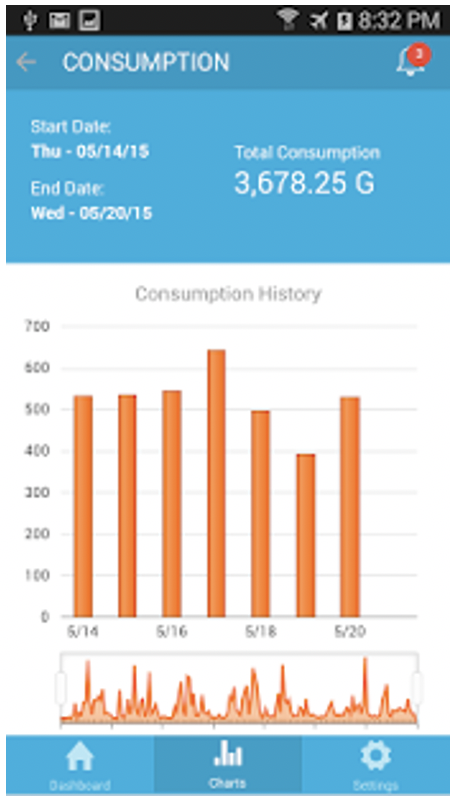
The District has moved to automatic meter reading, at considerable expense, to help homeowners monitor their water use. The meters report usage continually via a cellular signal.
Homeowners are encouraged to download the Waterscope app for iOS and Android phones and/or the Waterscope website. These applications allow regular feedback on water use. Waterscope has optional alerts when a leak is detected and can notify the homeowner by email of unusually high use.
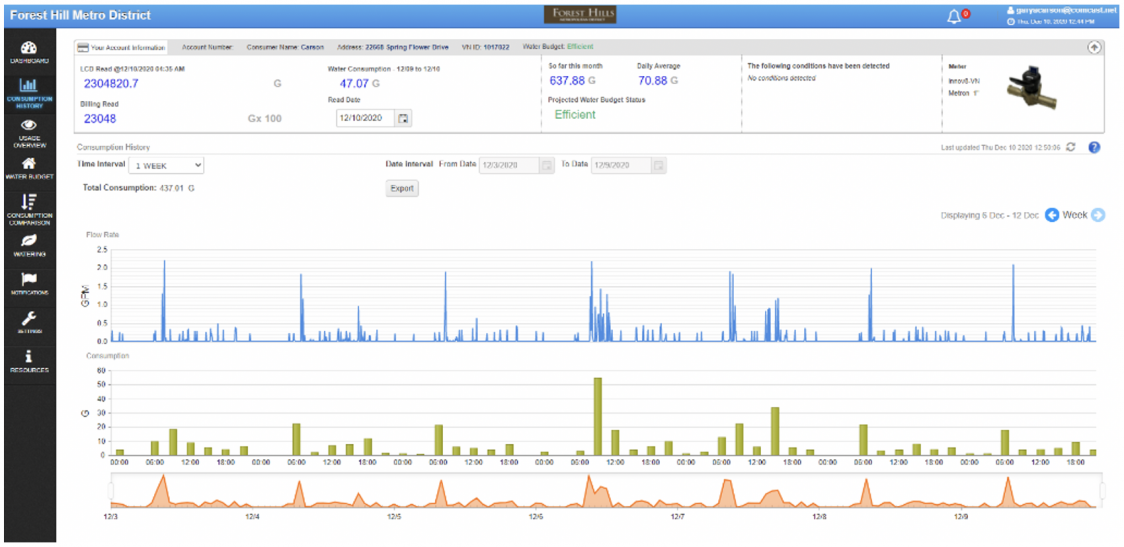
The District will not consider any account adjustment for leaks or other excess use if the homeowner has not taken advantage of the alerts the Waterscope app provides.
Water Treatment
As the District’s water is from wells, it contains minerals including calcium. Calcium can erode a home’s plumbing over time. FHMD encourages homeowners to consider having a water softener system installed to reduce the amount of calcium.
Curb Stop Valves
Curb stop valves allow District staff to turn water on or off to your home. This is especially important if there is a major leak in the line servicing your home. The curb stop valve itself is buried several feet down and located near the main water line. The valve is accessible through a sleeve with cap at the surface. The curb stop valve is District-owned and the homeowner is responsible for maintaining access. If you have trouble locating your curb stop, notify the District and we can arrange to help you locate it.
PRV Valves
A pressure-reducing valve, (or PRV) is a specialized plumbing valve that reduces the water pressure coming into your home to a safe level. Too much water pressure can cause severe plumbing problems, so it is particularly important to keep the water pressure under control. Most home plumbing fixtures are designed to work best at a pressure of about 50 psi, but our District’s water pressures are generally 85 to 100psi. However, they can be as high as 200 psi occasionally. If such high pressures are not controlled, the strain can eventually cause joints to fail, faucets and other fixtures to leak, and appliances to break down. Failures can lead to major floods and water damage. All homes within the District must have a functioning PRV installed and it must be rated to a minimum of 300psi inlet pressure.
Like all plumbing fixtures and valves, water pressure regulators eventually grow old and fail. If you notice water hammering of any type, or experience variations in water pressure, it may be a sign that your PRV is no longer working properly. Testing the water pressure at least once a year is always a good idea, or whenever you have questions about the regulator’s effectiveness. It is recommended the PRV valve be replaced every 10-15 years as a maintenance item. With our District’s natural hard well water, periodic replacement is especially important.
PRV Valve Test
A quick test of your PRV involves attaching a pressure gauge to a house hose bib then shutting off all faucets in your home. Open the bib to pressurize the gauge. If the pressure exceeds 70psi, you should open one faucet slightly then adjust your PRV, using the valve’s adjustment screw, until it drops below 70psi. If the PRV cannot be properly adjusted, replacement should be strongly considered.
While you are checking the pressure, close all faucets then the main shutoff to your home. Drain a few cups of water from a faucet until the pressure drops approximately 10psi. If the pressure starts to rise slowly over 15 minutes, that is an indication your main shutoff valve may be leaking and needs servicing.
Annual Hydrant Flush
There are 22 fire hydrants within the District. It is imperative water lines are scoured with high flows and hydrants are confirmed to be functional for fire protection should the need arise. Notification will be sent to all residents that are subscribed to the District’s email list prior to each flushing.
The Benefits of Hydrant Flushing
- Confirmation of hydrant and valve operability
- Improved water quality through removing accumulated sediment
- Assure effective chlorine disinfection levels
- Verification of proper pressure levels and flow for fire protection
Cautions
The hydrant flushing program may cause periods of discolored water in localized areas where flushing is being conducted. The discoloration is due to mobilization of particles and minerals by the high velocity water before they are discharged through the fire hydrants. The water will remain safe to use and generally clears within a few hours after flushing has been completed. Residents should monitor their water prior to starting laundry, especially when washing white clothes.
There may be periods of low or high water pressure. If your home’s Pressure Reducing Valve (PRV) has not been tested or replaced recently, you may want to consider shutting off your main water valve to minimize the risk of possible damage due to excessive pressures.

